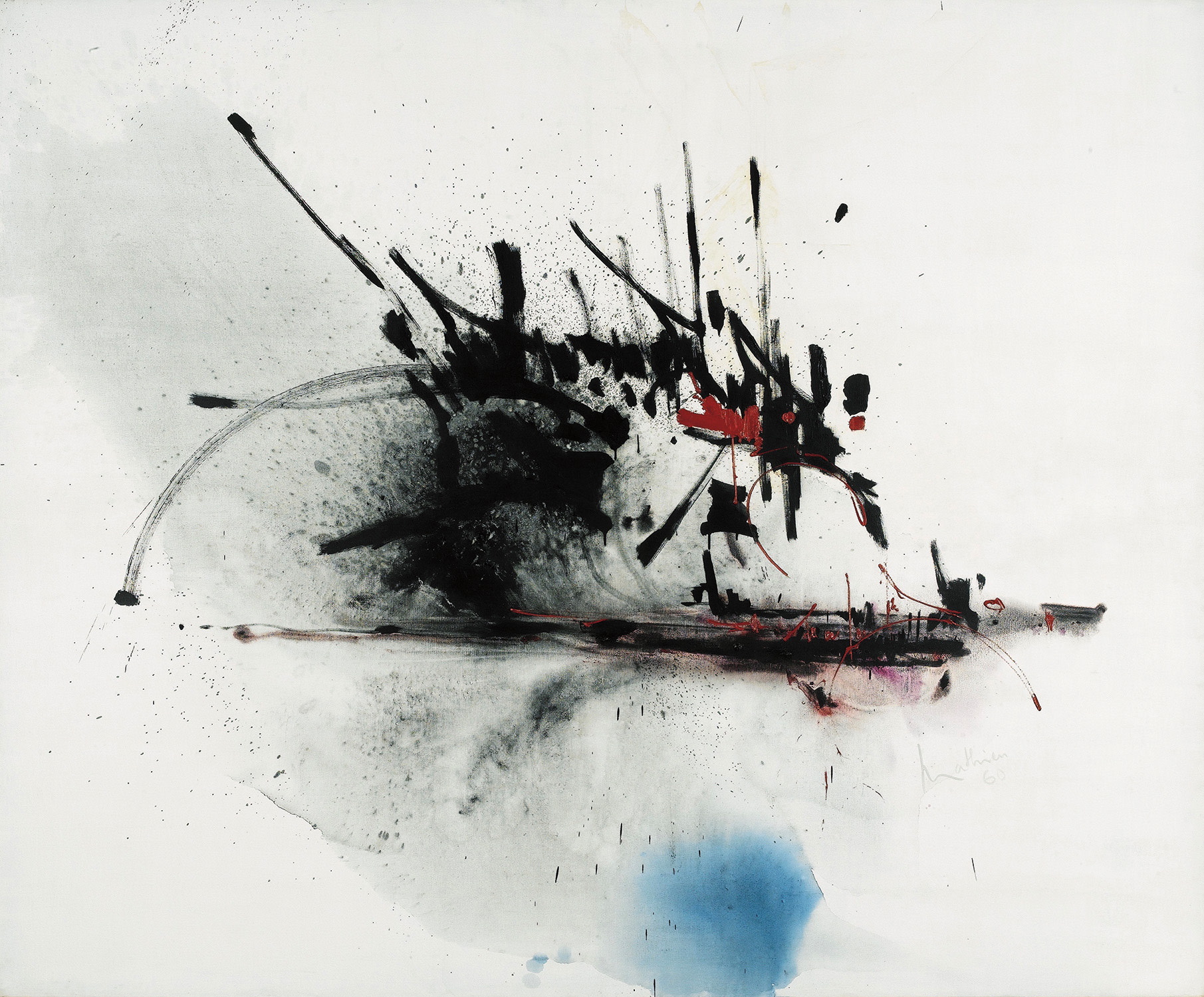

26Ο
Georges Mathieu
Petite Torture infligée au Marquis de Coconat et à son complice la Môle
signed 'Mathieu 60' lower right; further signed, titled and dated 'Petite Torture infligée au Marquis de Coconat et à son complice la Môle. Mathieu 1960' on the stretcher
oil on canvas
250 x 300 cm (98 3/8 x 118 1/8 in.)
Painted in May 1960.
This work will be included in the forthcoming catalogue raisonné, currently being prepared by Le Comité Georges Mathieu under no. GM60038, and is accompanied by a certificate of authenticity issued by Le Comité Georges Mathieu.
This work will be included in the forthcoming catalogue raisonné, currently being prepared by Le Comité Georges Mathieu under no. GM60038, and is accompanied by a certificate of authenticity issued by Le Comité Georges Mathieu.